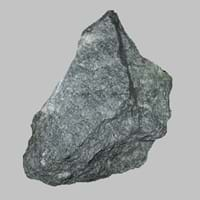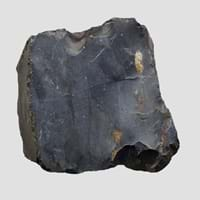Definition
It is a metamorphic magnesium rich rock because it is composed of the mineral talc
Chert is a hard, dark, opaque sedimentary rock which is composed of silica with an amorphous fine-grained texture
Discoverer
Unknown
Unknown
Etymology
From 17th century, because of its greasy feel and use like a soap
From flint-like quartz, 1670s, of unknown origin- a local term, which has been taken into geological use
Class
Metamorphic Rocks
Sedimentary Rocks
Sub-Class
Durable Rock, Soft Rock
Durable Rock, Hard Rock
Group
Not Applicable
Not Applicable
Other Categories
Fine Grained Rock, Opaque Rock
Fine Grained Rock, Opaque Rock
Texture
Polished
Banded, Rough
Color
Black, Black to Grey, Green, Grey
Black, Brown, Green, Grey, Red, White
Durability
Durable
Durable
Appearance
Dull, Banded and Foilated
Glassy or Pearly
Interior Uses
Bathrooms, Decorative Aggregates, Homes, Interior Decoration
Decorative Aggregates, Homes
Exterior Uses
As Facing Stone, Garden Decoration
As Building Stone, As Facing Stone, Garden Decoration, Office Buildings
Other Architectural Uses
Curbing
Curbing
Construction Industry
Manufacture of Magnesium and Dolomite Refractories
Arrowheads, Construction Aggregate, Cutting Tool, Spear Points
Medical Industry
Taken as a Supplement for Calcium or Magnesium
Not Yet Used
Antiquity Uses
Artifacts, Jewellery, Monuments, Sculpture
Artifacts, Monuments
Commercial Uses
Cemetery Markers, Creating Artwork, Gemstone, Jewelry, Manufacture of Soap, Solvents, Dyes, Plastics and Fibres, Production of Lime, Source of Magnesia (MgO)
Creating Artwork, Gemstone, In fire-starting tools, Jewelry, To ignite fire, Used in flintlock firearms
Types
Not Available
Flint, Jasper, Radiolarite, Common Chert, Chalcedony, Agate, Onyx, Opal, Magadi-type Chert, Porcelanite, Siliceous Sinter
Features
Host Rock for Lead
Clasts are smooth to touch, Easily splits into thin plates, Has High structural resistance against erosion and climate
Archaeological Significance
Famous Monuments
Christ the Redeemer in Rio de Janeiro, Stonehenge in English county of Wiltshire
Data Not Available
Sculpture
Used
Not Yet Used
Famous Sculptures
Data Not Available
Not Applicable
Pictographs
Used
Not Used
Petroglyphs
Used
Not Used
Figurines
Used
Not Yet Used
Formation
Soapstone is a talc-schist, which is a type of metamorphic rock and it is largely composed of the mineral talc and is thus rich inmagnesium.
Chert forms when microcrystals of silicon dioxide grow within soft sediments that become limestone or chalk. The chert formation can be either of chemical or biological origin.
Mineral Content
Albite, Apatite, Biotite, Calcite, Carbonate, Clay Minerals, Hornblende, Ilmenite, Micas, Plagioclase, Pyroxene, Quartz
Quartz, Silicon
Compound Content
CaO, Mg, MgO
Silicon Dioxide
Types of Metamorphism
Burial Metamorphism, Cataclastic Metamorphism, Contact Metamorphism, Hydrothermal Metamorphism, Impact Metamorphism, Regional Metamorphism
Not Applicable
Types of Weathering
Not Applicable
Not Applicable
Types of Erosion
Not Applicable
Chemical Erosion
Grain Size
Fine Grained
Very fine-grained
Fracture
Conchoidal
Uneven, Splintery or Conchoidal
Porosity
Less Porous
Highly Porous
Luster
Greasy
Waxy and Dull
Cleavage
Perfect
Non-Existent
Specific Gravity
2.86
2.5-2.8
Transparency
Opaque
Translucent to Opaque
Density
2.8-2.9 g/cm3
2.7 g/cm3
Resistance
Heat Resistant, Pressure Resistant
Heat Resistant, Impact Resistant, Pressure Resistant, Wear Resistant
Deposits in Eastern Continents
Asia
China, India, Indonesia, Japan, North Korea, Russia, Saudi Arabia, Singapore, South Korea, Sri Lanka, Tajikistan, Thailand
China, India, Iran, Japan, Oman, Russia, Saudi Arabia, Taiwan, Thailand, Vietnam
Africa
Egypt, Ethiopia, Ghana, South Africa, Western Africa
Kenya, Morocco, South Africa, Tanzania
Europe
Austria, England, Finland, France, Germany, Greece, Spain, Sweden, Switzerland, United Kingdom
Austria, France, Greece, Italy, Malta, Poland, Portugal, Serbia, Spain, Sweden, United Kingdom
Others
Not Yet Found
Greenland, Mid-Atlantic Ridge
Deposits in Western Continents
North America
Canada, USA
Canada, Mexico, USA
South America
Colombia
Bolivia, Brazil
Deposits in Oceania Continent
Australia
Central Australia, New Zealand, Queensland
New South Wales, Queensland, South Australia, Western Australia
All about Soapstone and Chert Properties
Know all about Soapstone and Chert properties here. All properties of rocks are important as they define the type of rock and its application. Soapstone belongs to Metamorphic Rocks while Chert belongs to Sedimentary Rocks.Texture of Soapstone is Polished whereas that of Chert is Banded, Rough. Soapstone appears Dull, Banded and Foilated and Chert appears Glassy or Pearly. The luster of Soapstone is greasy while that of Chert is waxy and dull. Soapstone is available in black, black to grey, green, grey colors whereas Chert is available in black, brown, green, grey, red, white colors. The commercial uses of Soapstone are cemetery markers, creating artwork, gemstone, jewelry, manufacture of soap, solvents, dyes, plastics and fibres, production of lime, source of magnesia (mgo) and that of Chert are creating artwork, gemstone, in fire-starting tools, jewelry, to ignite fire, used in flintlock firearms.










